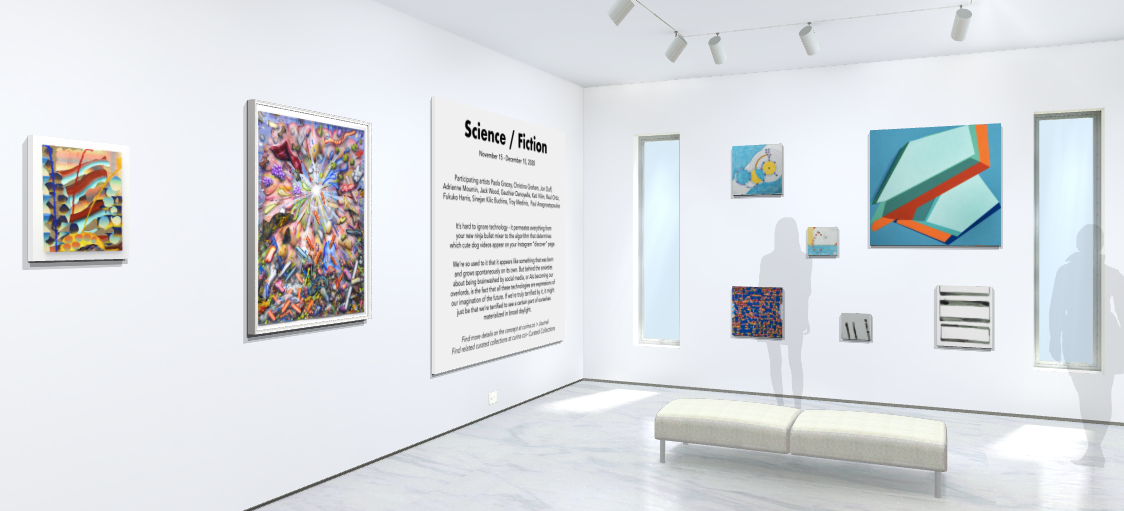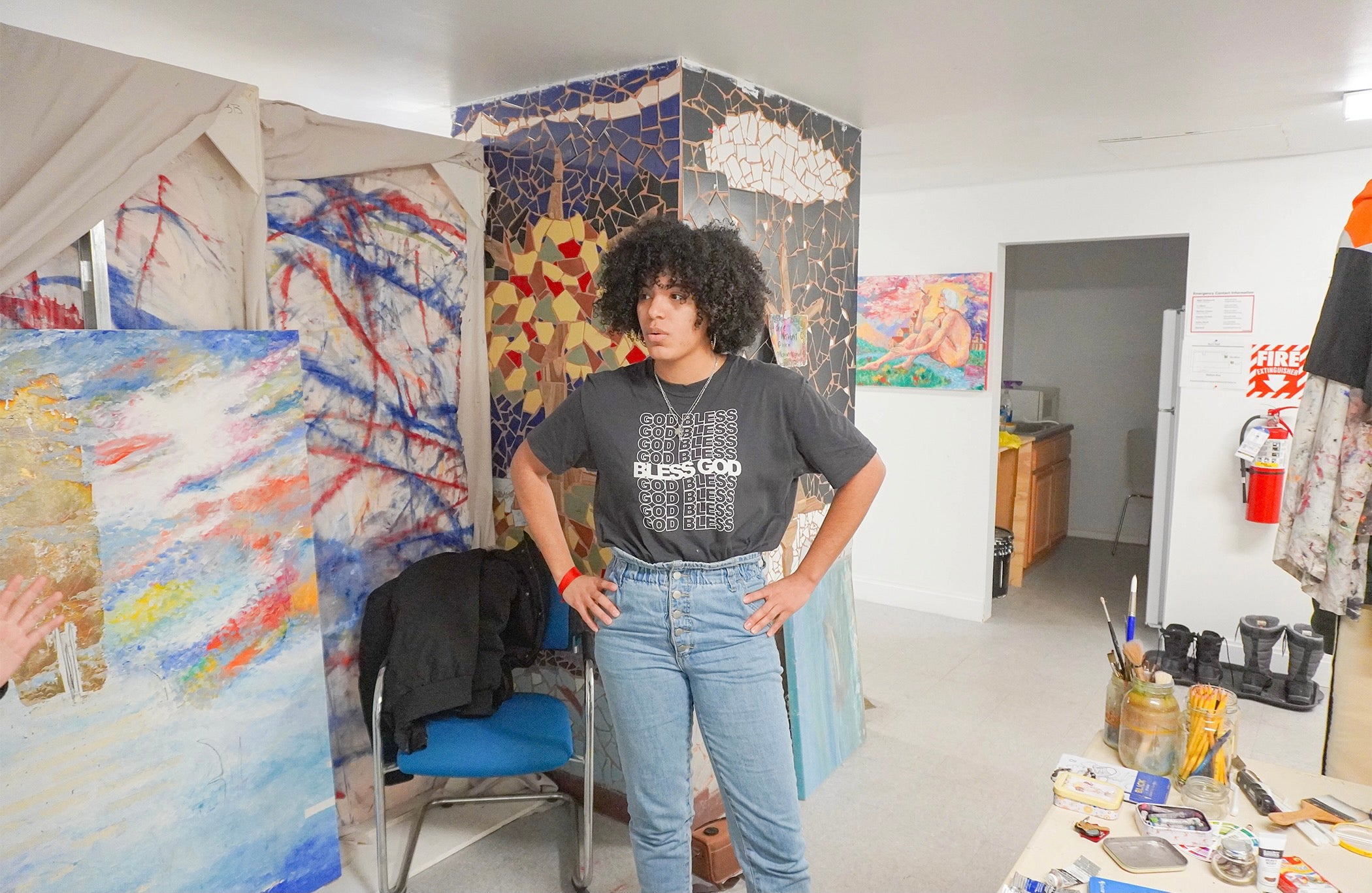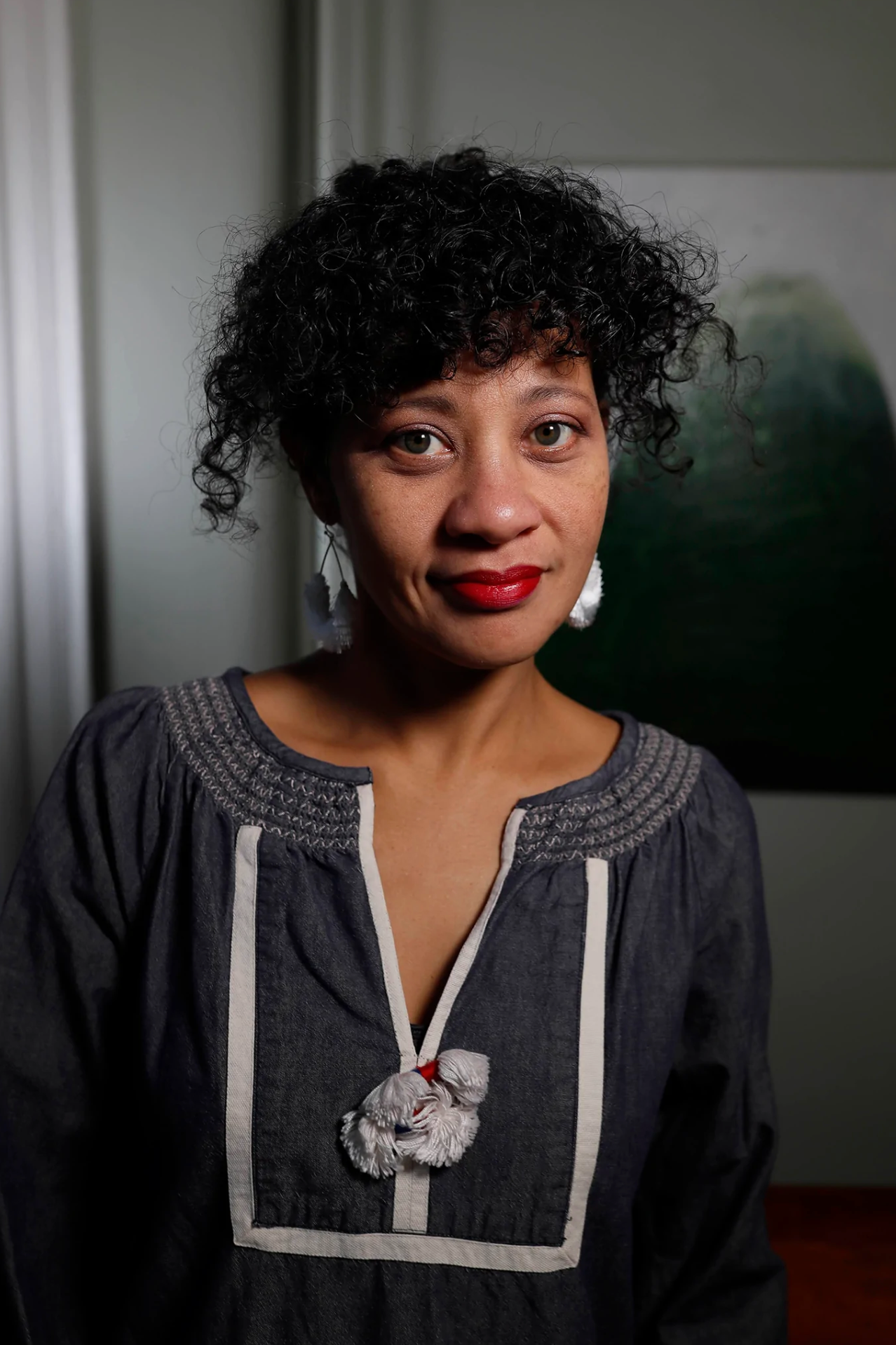No Products in the Cart

A Curina Virtual Exhibition:
Science / Fiction
November 15 - December 15, 2020
Paola Gracey, Christina Graham, Jon Duff, Adrienne Moumin, Jack Wood, Jenny Kemp, Gauthier Denoyelle, Kati Vilim, Raul Ortiz, Fukuko Harris, Christian Perdix, Sinejan Kilic Buchina, Anna Ortiz
It’s hard to ignore technology - it permeates everything from your new ninja bullet mixer to the algorithm that determines which cute dog videos appear on your Instagram “discover” page. We’re so used to it that it appears like something that was born and grows spontaneously on its own. But behind the anxieties about being brainwashed by social media, or AIs becoming our overlords, is the fact that all these technologies are expressions of our imagination of the future. If we’re truly terrified by it, it might just be that we’re terrified to see a certain part of ourselves materialized in broad daylight.
Also check out Science /between/ Fiction, a series of talks about the intersection of art and technology:
- Meet Zino Haro, hacker, musician, designer
- Meet Kat Vlasova, multimedia artist
- Will Machines Replace Artists?
Thread 1: Welcome to the Matrix
[click title to view as collection]
What’s the antidote to our anxieties about being manipulated by the Matrix, a.k.a big brother technology? Manipulate it right back! To speak of a bleak future is one thing, but it is an act of reinstating power to materialize it and give it a taste of its own medicine - endless reflections, fragmentation, crowding, or impossible morphings.
Also consider...y2k culture
The year: 1999.

Originally, y2k was a software bug that made the year "2000" indistinguishable with "1900". Among the public, it caused fears that technology had reached a limit and we were approaching an apocalypse. (ex. articles like Doomsday 2000)


Left: Donna Haraway, Cyborg Manifesto / Right: Linda Dement, Cyberflesh Girlmonster (1995)
Scholars were also interested in the symbolic effects of technology. This movement called itself Cyberfeminism.
Donna Haraway in her seminal Cyborg Manifesto suggested that the cyborg become an emblem for a future without boundaries between race, gender, or even human/machine. Think about how you can be virtually anything on the internet via an avatar of pseudonym. There's no personal history or appearance-based bias online - or so at least we hoped in these early years of the Internet.


In popular culture, it led to an obsession with technology -
it was a mixed feeling between extreme optimism and extreme fear of the future, because people felt like technology was no longer predictable.
In fashion, futuristic materials like plastic, vinyl, and iridescent fabric became popular. In music, using samples became widespread, often in a way that makes the usage of technology blatant through glitching, extreme paulstretching, or autotune. Both trends were big in the rave scene, that embodied the "dance like it's the end of the world" vibe with parties going on all night in a state of trance-like exhaustion.

In the present, we're seeing a huge y2k comeback.
Is it just another trend that capitalizes on our nostalgia for the past, or is there actually something common between our current anxieties and those hard felt in 1999?
Like Christopher Johnson says in Ambient Technologies, Uncanny Signs:
"...with the increasing relief of human motion, memory, calculation and communication, with the increasing delegation of the vital to the programmatic, it becomes increasingly impossible to locate the programme. The scope and scale of this delegation means that control would be increasingly remote from and independent of the human, in instances of self-regulation and auto-mobility evoking not so much the sense of the sublime as the uncertainty of the uncanny."
Thread 2: The Mystic, The Mathematician
[click title to view as collection]
Also consider...the sheer aesthetic power of science.
Long, long, time ago humanity didn't have the kind of hardware we have today, but that didn't stop our ancestors from being eager to learn about the world. Nor does that make their efforts "lesser" than ours.
 Film adaptation Crash (1996), dir. David Cronenberg
Film adaptation Crash (1996), dir. David Cronenberg
Even now, science is not just about practical benefits. As a slightly (or profoundly?) control-freak species, we get a lot of satisfaction from being able to manipulate things around us. At the same time, because we usually like being in control, occasionally realizing that the Universe is still vast and beyond grasp is also a remarkable sensation.
In J.G. Ballard's short novel Crash (1973), the protagonist develops a fetish for something as terrible as car accidents. For him it's the same sublime feeling like seeing a huge ocean or mountain peaks:
For a moment I felt that we were the principal actors at the climax of some grim drama in an unrehearsed theatre of technology, involving these crushed machines, the dead man destroyed in their collision, and the hundreds of drivers waiting beside the stage with their headlamps blazing. (p.22)
Aside from fiction, here are a few people who are both artists and scientists, and see the two fields as forever entangled.

Iannis Xenakis (1922-2001) was a composer and architect who used math theories such as set theory and game theory in creating musical compositions. He didn't stop at theories though - having worked at architecture studios, none other than at seminal modern architect Le Corbusier's, he also designed music for specific buildings or sites like the Persepolis in Greece. Listen to an example here: Philips Pavilion/Metastaseis B https://www.youtube.com/watch?v=SZazYFchLRI
Here's how Xenakis saw math as being inherent in music.
"Music has always been, and continues to be, both sound and number, acoustics and mathematics, and this is why it is universal...But today musicians have at their disposal a range of instrumentation, thanks to computers, whose possibilities are incomparably greater than the classical music chamber...The musical creator today is comparable to the astrophysicist who investigates of the mystery of the galaxies. But the astrophysicist does not create the galaxies he is exploring, whereas the musician actually produces his, by his creative act." (from https://www.iannis-xenakis.org/xen/bio/biography.html)"


(Left) Douglas Hofstadter, Gödel, Escher, Bach / (Right) M.C.Escher, Reptiles (1943)
Gödel, Escher, Bach: an Eternal Golden Braid by Douglas Hofstadter links the art of composer Bach and artist Escher with the mathematical theorem by Godel. It gained such a huge following, especially among the computer science crowd, that it's now known as "GEB". In the book, Hofstadter is outlining that all three genres are fundamentally different kinds of language that all have an element of self-referentiality - like Escher's eternally rotating march of lizards. Not surprisingly, he sees the potential for codes to be not just tools for an end but a way of discovering more about our own minds, much like artists Bach and Escher he wrote about.
Consciousness, Hofstadter wanted to say, emerged via just the same kind of “level-crossing feedback loop.” Hofstadter wanted to ask: Why conquer a task if there’s no insight to be had from the victory? “Okay,” he says, “Deep Blue plays very good chess—so what? Does that tell you something about how we play chess? No. Does it tell you about how Kasparov envisions, understands a chessboard?” A brand of AI that didn’t try to answer such questions—however impressive it might have been—was, in Hofstadter’s mind, a diversion. (source: https://www.theatlantic.com/magazine/archive/2013/11/the-man-who-would-teach-machines-to-think/309529/ )
Thread 3: Time Machine
[click title to view as collection]

Also consider: Entanglement between past and future
Before the European Renaissance started praising individual artists as heroes, many cultures saw art as a "technique" (which was not a derogatory term, either).
Etymologically, “art” is derived from Latin artem or ars, while technology was formed upon the stem of a term of classical Greek origin, namely tekhne. Originally, ars and tekhne meant much the same thing, namely the skill of the kind associated with craftsmanship...to describe every kind of activity involving the manufacture of durable objects by people who depended on such work for a living...(Tim Ingold, “Beyond Art and Technology: The Anthropology of Skill”)
Zoë Sofia, “Contested Zones: Futurity and Technological Art”
To artists working in countries with little access to constantly upgraded computer equipment (let alone a stable electricity to run it), a fetishization of scientific and technological aesthetics and artworks produced on the latest high-end machines could be seen as another instance of a European or U.S. preoccupation being proclaimed as a "universal aesthetic," to form yet another canon that favors artists who are white and male, once again "re-establishing the aesthetic superiority of wealthy nations over poor countries"
William Gibson, The Gernsback Continuum
http://writing2.richmond.edu/jessid/eng216/gernsback.pdf









